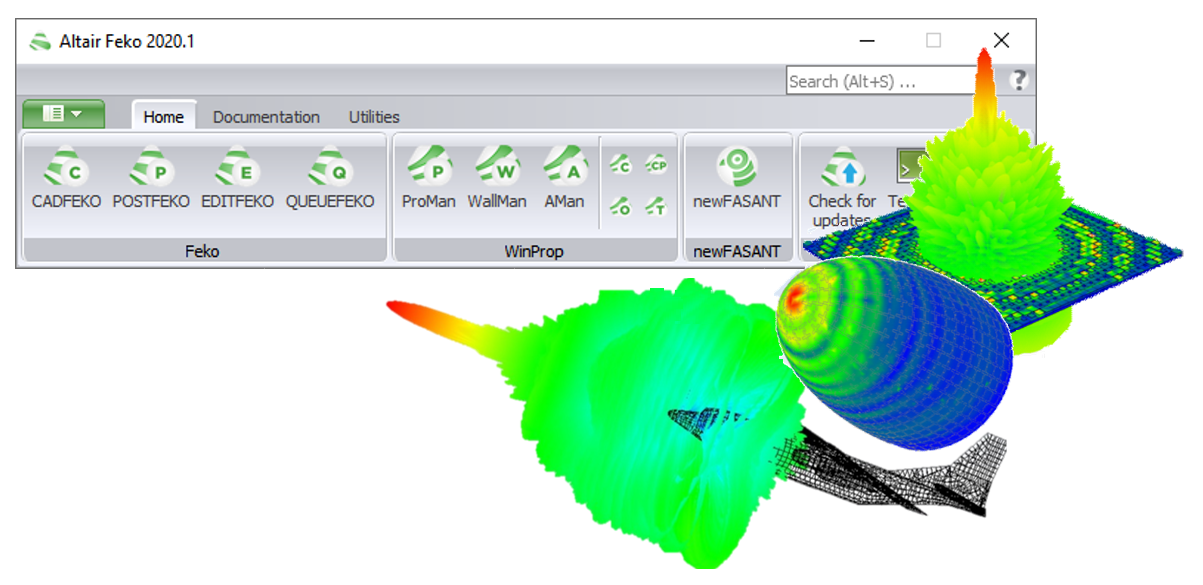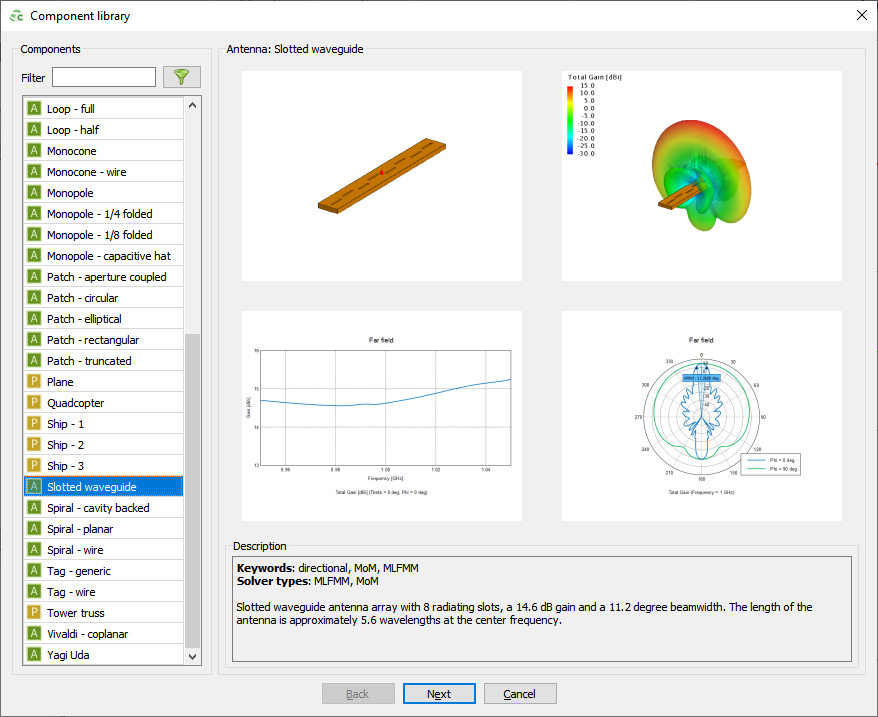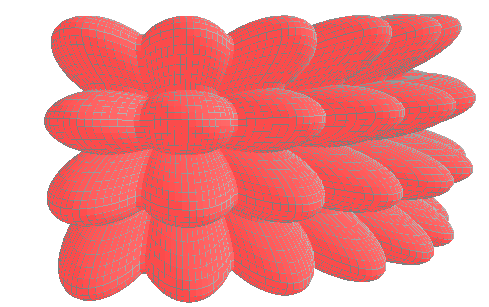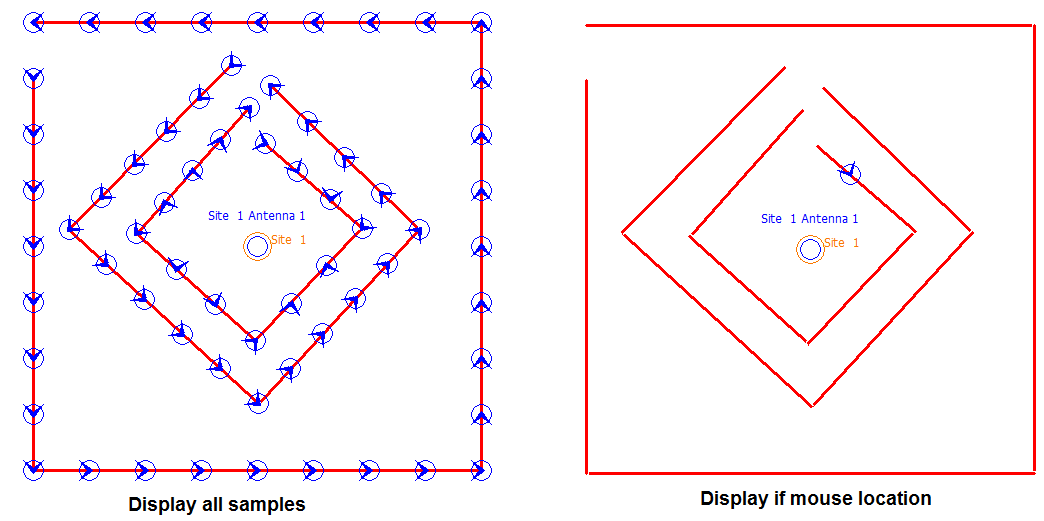Release Notes: Altair Feko 2020.1
Altair Feko 2020.1 is available with new features, corrections and improvements. It can be applied as an upgrade to an existing 2020 installation, or it can be installed without first installing Altair Feko 2020.
Feko is a powerful and comprehensive 3D simulation package intended for the analysis of a wide range of electromagnetic radiation and scattering problems. Applications include antenna design, antenna placement, microstrip antennas and circuits, dielectric media, scattering analysis, electromagnetic compatibility studies including cable harness modelling and many more.
WinProp is the most complete suite of tools in the domain of wireless propagation and radio network planning. With applications ranging from satellite to terrestrial, from rural via urban to indoor radio links, WinProp’s innovative wave propagation models combine accuracy with short computation times.
newFASANT complements Altair’s high frequency electromagnetic software tool (Altair Feko) for general 3D EM field calculations, including, among others, special design tools tailored for specific applications like complex radomes including FSS, automated design of reflectarrays and ultra-conformed reflector antennas, analysis of Doppler effects, ultrasound systems including automotive or complex RCS, and antenna placement problems. Advanced solver technologies like the MoM combined with the characteristic basis functions (CBFS), PO/GO/PTD, GTD/PO and MLFMM parallelised through MPI/OpenMP, being some of them especially efficient for the analysis of electrically very large problems.
Highlights of the 2020.1 Release
The most notable extensions and improvements to Feko and WinProp.
Salient Features in Feko
- newFASANT is integrated into HyperWorks and included as part of the Feko installation. The newFASANT application can be opened from
the Feko Launcher utility.Figure 1. newFASANT is rebranded and integrated into HyperWorks.

- The component library in CADFEKO is expanded with new spiral antennas, RFID tags, an
elliptical patch, a TEM horn, a crossed dipole and a slotted waveguide antenna.Figure 2. The slotted waveguide antenna is one of the new antennas in the CADFEKO component library.

Salient Features in WinProp
- Extended beam and envelope pattern generation to allow user-defined beams in the
elevation domain.Figure 3. Envelope pattern generated in AMan.

- The orientation of the antenna at the mobile station can now be visualised in
ProMan.Figure 4. ProMan visualisation of antenna orientation.

- Added support for the definition of up to 64 antenna elements at the mobile station.
- Improved the visualisation of results along trajectories.
- Improved the accuracy of the MIMO condition number calculations. Results show better agreement than before with customer measurements for realistic scenarios.
Feko 2020.1 Release Notes
The most notable extensions and improvements to Feko are listed by component.
CADFEKO
Features
- Added 10 new antennas to the component library, including spirals, RFID tags, an elliptical patch, a TEM horn, a crossed dipole and a slotted waveguide antenna.
- Added an option to the Create cable path dialog (Advanced tab) for exporting cable parameters such as inductance/capacitance matrices and transfer impedance/admittance to the .out file.
- Updated the algorithm that calculates and reports the number of cable segments in a model when meshing to match the latest changes in the Feko solver. The changes relate to the segmentation of twisted pairs, twisted bundles and combined MoM/MTL cable solutions.
- Added the option to swap the source and field validity regions of near field data to be used in a near field source. It is usually assumed that the fields inside the near field source box, sphere or cylinder are zero and the fields outside the box, sphere or cylinder are equivalent to the measured or calculated field values. This option can be used to specify that the field values outside the box, sphere or cylinder are zero and the fields inside the box, sphere or cylinder are equivalent to the measured or calculated field values.
EDITFEKO
Feature
- Added the option to swap the source and field validity regions of aperture sources (AP card).
POSTFEKO
Feature
- Reduced the load time when opening models.
Solver
Features
- Improved the automatic determination of sampling point density along the path of twisted pair or twisted bundle cables by considering the smallest pitch length among twisted cross-sections, leading to accuracy improvements.
- Improved the automatic cable segmentation during a combined MoM/MTL solution by allowing for the outer problem to be discretised using standard MoM meshing rules, and the inner problem to be meshed MTL meshing rules.
- Significantly reduced the memory requirement for simulating FEM models in parallel by exploiting shared memory architecture. Large savings in memory usage can be obtained when large models, with many tetrahedra, are simulated on nodes with many processes. In particular, the memory requirements for storing tetrahedral mesh information are reduced by up to an order of magnitude.
- Improved the solution of the system of linear equations phase with FEM based solvers for parallel simulations leading to faster solutions.
- Improved the peak memory usage of FEM based solvers for parallel simulations leading to lower memory requirements.
- Improved the parallel efficiency of MLFMM solutions of problems with multi-scale meshes.
- Added support for parallel simulations with the direct ACA solver on machines with hybrid (shared/distributed) memory architecture.
- Improved the time efficiency of the calculation of right hand side vector for parallel computations for all solvers except ACA and DGFM solutions.
- Added an option to swap source and field validity regions when a near field source is used.
- Upgraded HyperSpice to the latest version.
Resolved Issue
- Improved the robustness of an MLFMM solution of models with a few unknowns computed using a large number of parallel processes.
Shared Interface Changes
Support Components
Features
- Included newFASANT (using Altair Units) in the Feko installation. newFASANT gets installed to the same location as Feko. The Feko bin directory and other folder structures are shared.
- Added newFASANT to the Launcher utility.
- Removed the Licensing contextual tab from the Launcher utility and made the Utilities tab consistent across versions. The Student Edition now also displays a Utilities tab. Any item that is not available under the Student Edition will be disabled, with a tooltip indicating that it is unavailable in the Student Edition.
WinProp 2020.1 Release Notes
The most notable extensions and improvements to WinProp are listed by component.
General
Resolved Issues
- Replaced a corrupted zip archive for Project 4 of the Getting Started exercises. The material database valid up to 300 GHz is included with the examples.
- Added missing CoMan examples to the installation.
ProMan
Features
- Added support for the definition of up to 64 antenna elements at the mobile station.
- Improved the visualisation of results along trajectories.
- The orientation of the antenna at the mobile station can now be visualised in ProMan.
Resolved Issues
- An error message is issued when MIMO in a project is disabled by the user while individual MIMO streams are inadvertently still active from an earlier simulation setup.
- Improved the accuracy of the MIMO condition number calculations. Results show better agreement than before with customer measurements for realistic scenarios.
- Fixed a bug that resulted in the transmitter being displayed at the incorrect height in 3D view, in a project with topography (pixel or vector), when results are loaded directly from a file.
- The minimum distance between evaluation points, during mobile station post-processing, is now 0.001 metres.
AMan
Feature
- Extended beam and envelope pattern generation to allow user-defined beams in the elevation domain.
Resolved Issue
- The sign of the polarisation angle is now considered when creating a full polarimetric antenna pattern in AMan.
Application Programming Interface
Features
- Added support for simulations using RCS information in the WinPropAPI.
- Added support for all prediction models associated with radiating cables in the WinProp API.
- Added complete support for CNP simulations in the WinProp API.
newFASANT 2020.1 Release Notes
The most notable extensions and improvements to newFASANT are listed by component.
GUI
Features
- Updated Java 3D libraries for the visualization of 3D geometries.
- Added Feko aperture sources in the MOM module to include files with extensions .efield and .hfield to be used as an excitation of geometries.
- Enabled the CBFM for radome problems in the MOM module and RCS problems in the MONCROS module.
- Added slotted waveguide array user functions.
- Added new implementation of the Speed Up feature in the MONCROS module.
- Added PBS support for the MOM and GTD modules.
- Added new input parameters to the US module.
- Added multiple sources in the US module.
- Included new CBFM options in the solver parameters to allow more flexible simulations.
- Included a new option to use the SAI for the estimation of the initial currents in the iterative solution process in the MOM and MONCROS modules.
- Removed the requirement for OpenGL when the GUI is launched in server mode.
- Added new parameters to the newfasant.conf file to allow a user-customized GUI configuration.
Resolved Issues
- Fixed a problem with the range in the Doppler Spectrum chart.
- Fixed the visualization of GTD results.
- Fixed the visualization of field results in the PE module.
Solver
Features
- Added a new meshing scheme based on the GUI rendering algorithm for the US solver.
- Modified the hybrid technique of the CBFM MPI/OpenMP version for the computation of the reduced matrix using the Multilevel Fast Multipole Algorithm to reduce the CPU time.
- Include the MoM currents for the generation of the CBFs.
- Improved the generation of the CBFs using MoM currents when computing the reduced matrix using MLFMM in the CBFM MPI/OpenMP solver option.
- Improved the criterion to consider infinitely far sources (plane waves) in the GTD/PO solver.
- Updated the selection of CBFS depending on external sources values in the tool that computes the reduced matrix using MLFMM with MPI/OpenMP models.
- Updated the definition of the blocks when using MoM currents with extensions and computing the reduced matrix rigorously in the CBFM MPI/OpenMP models.
- Included the direct solver for the CBFM solver.
- Implemented the SAI preconditioner for the case when the reduced matrix is computed using MLFMA using the CBFM OpenMP solver.
- Introduced the volumetric approximation for the CBFM created by using volume block description and rigorous matrix computation method for the OpenMP solver option.
- Increased to double-precision the product operations performed with the preconditioner (not the storage) for the SAI in MOM solvers.
- Included analysis of volume-defined material structures for CBFS with OpenMP and MPI/OpenMP solvers.
- Modified maximum iteration count for the restarted GMRES in MOM solvers.
- Fixed code to allow working with MESH_SURFACES avoiding remeshing in the GTD/PO solver.
- Added support for the dynamic allocation of the output cuts and angles of the radiation pattern in MOM solvers to reduce memory footprint.
- Improved the surface impedance calculated through the reflection coefficient in all MOM solvers for coated surfaces.
- Improved the ray-tracing when the geometry is modelled with conductor and/or absorbent materials and the transmission effect is enabled in the GTD solver.
- Improved the US solver to consider new parameters in US source pattern.
Resolved Issues
- Fixed a bug in the criterion used to determine if working with a near field or far field simulation in the GTD/PO solver.
- Fixed bug when the source is located at an infinite distance in the GTD/PO solver.
- Corrected some bugs in all configurations (GMRES, Diagonal preconditioner, BICGSTABL, …) of the CBFM solvers.
- Fixed some bugs found in the sum of the direct fields when several antennas are considered in GTD solver.
- Fixed a bug found when working with materials in the GTD/PO solver.
- Fixed a bug found when checking the edge conditions in the PO solver.
- Fixed a bug found when computing the diffraction contributions in the GTD/PO and PO solvers.
- Fixed a bug found when the transmission contribution is computed in the GTD solver.
- Fixed a bug found when classifying GTD surfaces and checking the possible children patches in the GTD/PO solver.
- Fixed a bug found when the ray-tracing of a double transmission is computing for both near and far field in the GTD solver.
- Fixed a bug found when the reflection point is on the common edge of two coplanar surfaces in the GTD solver.
- Fixed a bug when computing coupling in the US and GTD solvers.
- Fixed a bug when checking occlusions of outgoing tubes for the observation directions considering bistatic simulations in the PO solver.